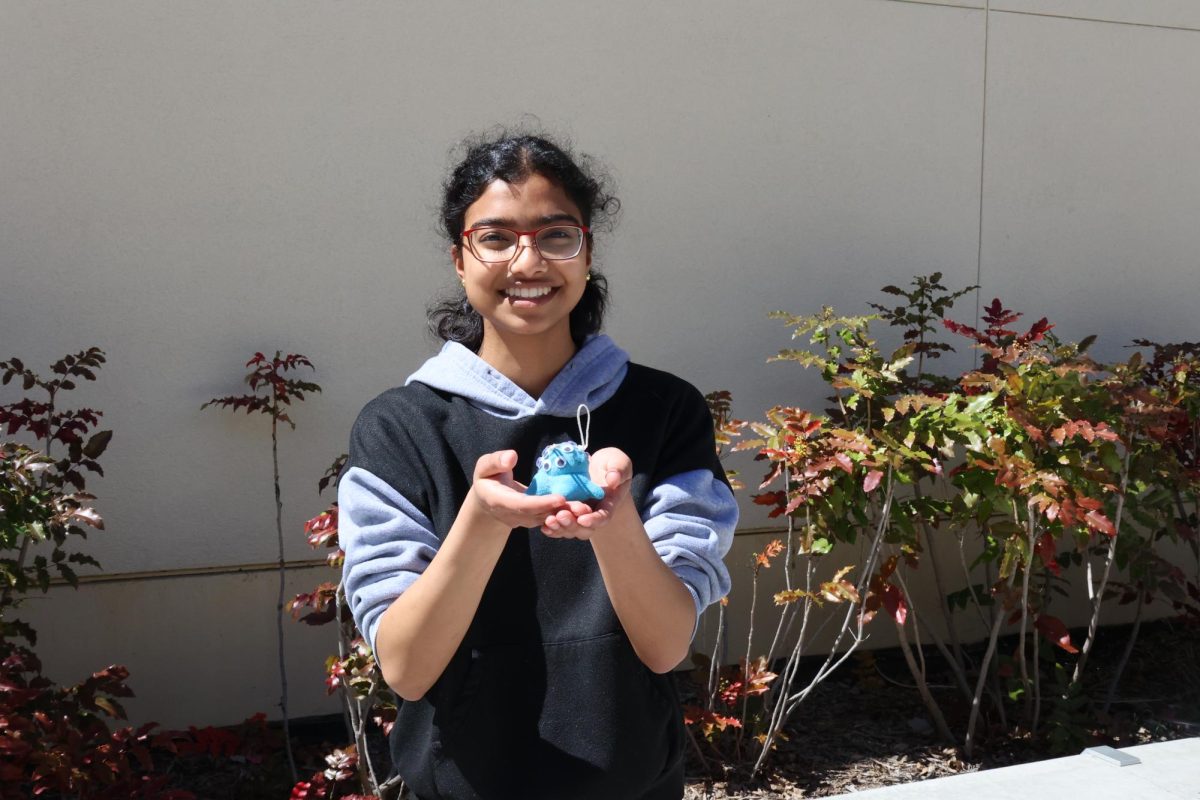Written by Lena Ye
On Mar. 14, Equity Coordinator Dr. Martha Castellon presented the Equity Plan to the Board of Education. The Equity Plan was one of the Minority Achievement & Talent Development Advisory (MATD) Committee’s recommendations in their short-term strategies to increase equity in access to education.
The MATD Committee was created “for the purpose of uncovering underlying causes of the achievement gap in PAUSD and for the purpose of issuing a set of research-based recommendations to guide the district in advancing educational opportunities and outcomes for historically underrepresented students and students from economically challenged backgrounds,” according to the Palo Alto Unified School District (PAUSD) website. In the 2014-15 school year, the committee investigated the root causes of the achievement gap and then compiled a report of the findings and presented evidence of the achievement gap to the Board, citing evidence such as gaps in SAT results and anecdotes from historically underrepresented (HUR) students.
HUR students are made up of students who are either part African-American, Hispanic Latino, Pacific Islander/Native Hawaiian or Native American/Alaskan Native, or students who are from socioeconomically disadvantaged backgrounds. Economically disadvantaged students are identified by whether they qualify for free or reduced lunch.
The MATD Committee made a series of 14 recommendations, the first of which was to hire an equity Administrator—Castellon—who would create an Equity Plan, establish an Equity Team, monitor compliance, create a process to solicit feedback from HUR students and parents and train staff to address disparities between HUR and non-HUR students.
In the initial draft of the Equity Plan that Castellon presented to the School Board on March 14, she put forward a five-step plan to close the achievement gap: eliminate bias and intolerance, build positive and trusting relationships, actively monitor progress, employ an inclusive curriculum and empower parents and students.
At Gunn, the scope of the plan for addressing the achievement gap is narrower. According to Principal Dr. Denise Herrmann, Gunn has a three-pronged approach to narrowing the achievement gap which consists of expanding support systems for students, removing both academic and social barriers from classes and rolling out parent outreach coordinators.
Part of improving support systems for students was first identifying which students needed support. Herrmann has focused on improving Gunn’s response to intervention (RTI) system, which looks at data of students’ performance and identifies which students are at risk. “So you can do screeners, you can look at your D-list and then you have to have interventions right away,” Herrmann said. “[That way] you’re not waiting until the end of the semester to say, ‘Oh, sorry you failed the class; I guess you’ll have to retake it in summer school.’ It’s much more fast-paced, it is based on formative assessments.”
The College Pathways program, which is led by College & Career Counselor Myesha Compton, is intended to be part of this support system. Its purpose is to improve the access to resources of students that are the first generation in their family to go to college. “For example, there is a parent education component, making sure that they’re familiar with the high school education system, but also the steps they need to take to get their student prepared for college,” Compton said. “In terms of the student education, it’s making sure that they know what courses they should be enrolled in [at] high school, what the requirements are for getting into college, [and] information and exposure around the college experience that we do.”
The College Pathways program also offers information about financial planning and how to prepare for college. However, its scope is broader than just what its name covers; College Pathways offers a community for HUR students. “There are some cultural sort of things that we have to deal with [with] a historically underrepresented student in a community like Gunn, and making sure that they feel supported and have a space to be able to talk about things, like conversations that won’t come up in a classroom but still impact learning and level of comfort. Like, why are there not more underrepresented students in AP classes and things like that, and how do we address it,” Compton said.
That these students are underrepresented in high-lane and AP classes is one of the problems that Gunn is trying to solve with the second part of the plan: breaking down academic and social barriers. Removing gatekeepers, like applications or tests, for higher-lane classes, which started last school year, is one part of this plan. This was a problem that was brought up by the May 2015 MATD report. “For most underrepresented students, seventh-grade mathematics lane placement, which is determined by sixth-grade teachers on a district nine-point rubric and in-house placement test, restricts the opportunity to take higher level classes or even AB Calculus in high school,” the report reads. “In other words, students are disproportionately underrepresented in the more challenging high school classes because of seventh-grade lane placement.”
Open access is the process of removing gatekeepers and allowing all students entry to classes. “This is a clean slate,” Herrmann said. “And, if you want to try a harder math class, you should be able to try a harder math class, and we’ll be there to support you, and if it’s not [right], then you can probably go back down.”
Another part of the problem is the stigma that Compton brought up—that students might enroll in an AP class and find that everybody in the class looks different from them, or that they feel that other students and teachers see them as unable to succeed because of their race or economic status. “There’s a lot of research that shows that sometimes students aren’t achieving according to our traditional measures, not because they aren’t capable, [but] because we’re not letting them know that they are capable,” Herrmann said. “Early on, they got the message that they are not smart, or that they cannot do it, and so now that’s just the hat they wear.”
Compton says these biases are prevalent everywhere, and part of her work is talking to students about it. “You’re never going to wake up and not be a minority, so it’s more coming to terms with what that means, and being confident enough in your own ability and your skills to not let that affect you,” she said. “Realizing that you may not be able to change the way that others perceive you, nor is it your responsibility to try and change every person that you come in contact with.”
These biases are already being addressed by the district; schools are implementing unconscious bias training for teachers. “[Unconscious bias training] is also a part of the equity plan; it was one of the original 12 recommendations made by the MATD committee. Okay, so that teachers become aware; that everybody has bias, that people have biases is not in question [and that] what is in question is what are those biases and how do they come out,” Castellon said. “And then also being aware of how those behaviors can affect a student’s self concept and academic trajectory if they’re constantly receiving messages that ‘I’m not as good as the other kids; I try really hard, but I’m just not that smart.’ You know? They might think twice about what they choose for their career path, whereas if someone is actively encouraging their interests and building on their strengths and praising them, not charitable praise, but actual praise, for what they actually accomplish.”
From an outside perspective, it might not seem like historically underrepresented students are disadvantaged; all the students go to the same school and receive the same homework and instruction. However, these disadvantages are particularly harmful because they are so easy to miss. “It can come up in a variety of ways,” Compton said, “[Students] are not able to participate sometimes in a lot of the extracurricular and cocurricular activities that their peers are because they have an obligation. That may not seem like a big deal, but it actually does impact their experience in high school.” Economically disadvantaged students might not have the resources to go to prom or a football game. Students who live outside of Palo Alto might not be able to stay for an after-school club because they have to make the bus.
The third part of Gunn’s plan, the parent outreach coordinators, is intended to help the parents of HUR students acclimate to PAUSD. “We need parent liaisons to devote more time to those tasks,” Castellon said. “Those parent liaisons would coordinate and facilitate workshops for parents in the languages that the parents speak so that the parents can be active participants in their children’s education, so teach them how to use Infinite Campus, teach them how to use Schoology if they don’t know how to use those, orient them to the PAUSD website [and] how to use Google translate so that they can read the PAUSD website in their native language.”
According to Castellon, the parent liaisons program is only two years old, and most of the employees are part-time, and thus cannot effectively focus their time towards a school or individuals. She hopes to implement more full-time parent liaisons.
The achievement gap is extremely important to Herrmann, who qualified for free lunch as a student, which would have made her an economically disadvantaged student under PAUSD’s definition. Thus, Herrmann wishes to make clear that the achievement gap is a systemic problem and not reflective of an individual or group. “It’s not about really the academic achievement,” she said. “It’s not because their brains aren’t capable of learning just as much as every other kid on here…[It’s important] that you’re drilling down and you’re finding out what are some of the other things in their life that might be interfering with learning.”














